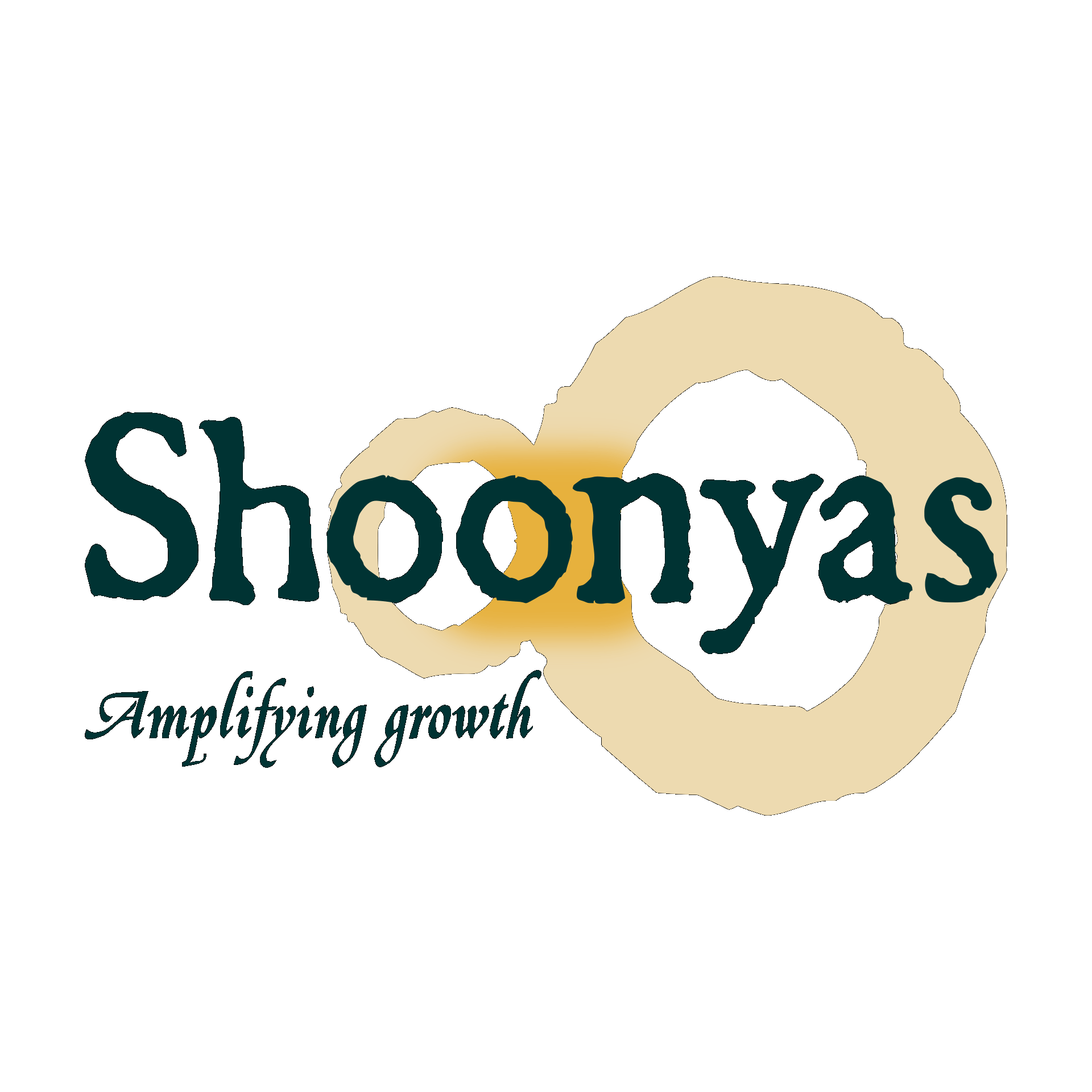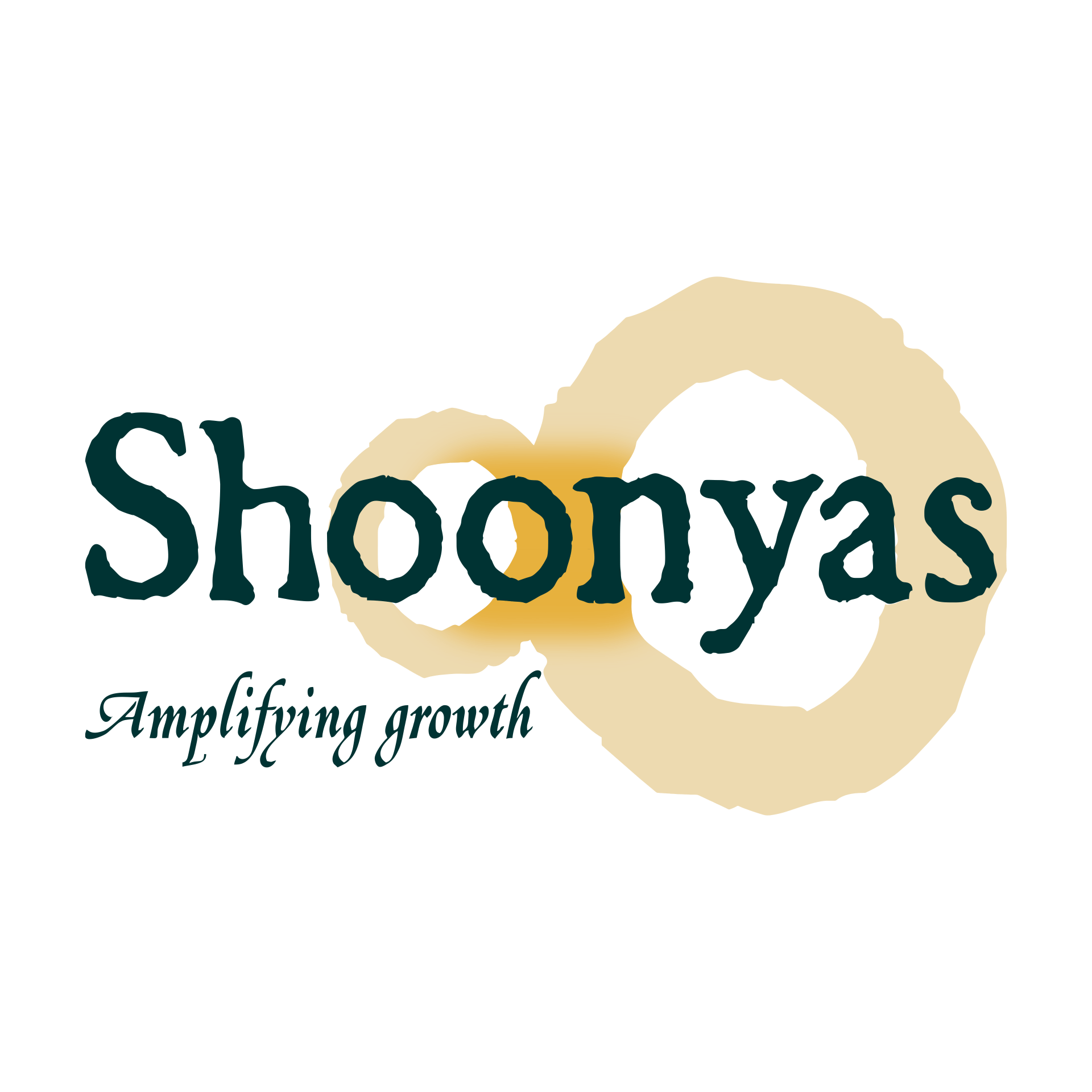

CXO Advisor
Building a Culture of Ownership & Accountability
“When a team owns their task, it’s no longer just a role—they’re driven by passion, with success as their goal.”
As leaders, we are tasked with more than just managing processes. Our responsibility extends to shaping a culture where each individual feels a deep sense of accountability for their contributions & their impact on the organisation’s trajectory.
Ownership & accountability are not about ticking boxes or meeting deadlines – they are about transforming everyday tasks into a shared mission where employees feel intrinsically motivated to deliver excellence
In today’s business environment, where agility & innovation often define success, leaders must cultivate cultures that make ownership the default mode of operation. Without it, organisations risk complacency, stagnation, and disengagement.
CXO Challenge
“Meghnand, my team is competent and delivers results, but I feel they are simply going through the motions. There’s a lack of passion, ownership, and accountability. How do I inspire them to not just do their jobs, but to take full responsibility and care deeply about outcomes?”
This is a recurring concern among senior leaders. A capable team can hit short-term goals, but if accountability is missing, long-term performance suffers. When employees are disengaged, innovation slows, mistakes increase, and clients feel the difference.
Research by Gallup shows that only 21% of employees globally feel engaged at work, and disengagement costs the global economy $7.8 trillion annually. For CXOs, this is not just a people problem — it’s a bottom-line issue.
Advisor’s Approach
In my work as an executive coach, leadership coach, and business coach, I integrate behavioural insights with the structural discipline of management consulting and the foresight of business advisory and financial advisory. This integrated approach ensures leaders don’t just inspire individuals but also embed ownership into the organisation’s DNA.
Here’s the structured framework to foster ownership and accountability:
-
1. Set Clear Expectations and Define Ownership:
Ownership thrives on clarity. Vague roles lead to vague performance.Action Plan:
– Define Roles and Outcomes: Ensure each team member understands their specific role and how it contributes to the larger organizational goals. Move from activity-based descriptions (“handle client accounts”) to outcome-driven ones (“improve client retention by 15%”)
– Link Work to Purpose: Deloitte’s Human Capital Trends study shows that employees who find meaning in their work are 3 times more likely to stay with their organisation. Leaders must connect day-to-day tasks with the company’s mission.
-
2. Foster a Culture of Autonomy and Trust:
Micromanagement suffocates accountability; autonomy empowers it.Action Plan:
– Delegate Authority, Not Just Tasks: Instead of delegating only tasks, delegate decision-making authority. Let employees design the “how” of execution.
– Trust As A Multiplier: Harvard research highlights that high-trust organisations report 50% higher productivity and 76% higher engagement.
-
3. Encourage Accountability Through Open Feedback:
Feedback is the oxygen of ownership. Without it, accountability fades.Action Plan:
– Implement Regular Check-ins: Conduct regular check-ins, but not as audits. Use them to reinforce responsibility and create safe spaces for reflection.
– Celebrate Ownership: Public recognition of initiative inspires others. When accountability is praised, it becomes aspirational.
-
4. Align Individual Goals with Organizational Success:
People must see the line between personal growth and company growth.Action Plan:
– Set Aligned Objectives: Use OKRs (Objectives & Key Results) or similar systems to connect individual ambitions with business outcomes.
– Incentives That Matter: Recognise initiative, problem-solving, and team contribution — not just task completion. When initiative is rewarded, it becomes cultural.
-
5. Lead by Example:
As a leader, your actions set the tone for the entire organization. Demonstrating accountability in your own decisions and being transparent about both successes and failures fosters a culture where ownership becomes the norm.Action Plan:
– Model Accountability: When you make decisions, be transparent about your thought process and take responsibility for the outcomes, whether good or bad. Showing vulnerability in your leadership encourages the same from your team.
– Hold Yourself to High Standards: Consistently demonstrate a high level of personal ownership and accountability. Your team will follow suit when they see you are deeply committed to both personal and organizational success.

Insightful Case Study:
The Ownership Transformation of Megan Brower
BACKGROUND:
Megan Brower, VP of Sales at a global e-commerce firm, managed a talented team that consistently met targets but lacked passion and initiative. The team executed, but they didn’t innovate. They delivered results, but they didn’t push boundaries.
SITUATION:
By early 2024, customer retention rates were falling. Clients were leaving not because the product lacked value, but because long-term engagement was weak. The sales team focused on acquisition but didn’t own client relationships after the deal closed.
This transactional mindset created gaps in customer satisfaction and long-term revenue growth. Megan realised the problem wasn’t skill — it was ownership.
STRATEGIES IMPLEMENTED
-
1. Redefining Accountability:
– Megan redefined the team’s roles by restructuring responsibilities to emphasize full ownership of the entire customer journey. Rather than just focusing on closing deals, each team member was now accountable for client satisfaction from acquisition through renewal.– She introduced performance metrics that tracked both sales and post-sale engagement, making it clear that maintaining long-term relationships was just as important as hitting sales targets.
Example: Megan implemented a new customer success scorecard, where each team member was evaluated on client retention and satisfaction. This shifted the team’s focus toward fostering lasting relationships, not just closing deals.
-
2. . Granting Autonomy:
– Megan empowered her team to develop and execute their own strategies for client retention. For instance, her lead account executive, Michael, designed a personalized post-sale engagement program, offering follow-up touchpoints at critical moments during the customer lifecycle.– Initially met with skepticism, the program soon became a best practice, as it led to improved customer satisfaction and repeat business.
Example: Michael’s program involved scheduling quarterly business reviews with clients, ensuring they saw continued value from the services. This proactive engagement reduced churn by 20% within the first six months.
-
3. Fostering a Feedback Culture:
– Megan created a monthly feedback loop where team members were encouraged to openly discuss challenges, successes, and areas for improvement.– This collaborative environment not only helped solve problems but also built trust and accountability among the team.
– These sessions also provided the opportunity for peer recognition, where team members would acknowledge each other’s contributions, further reinforcing a sense of ownership.
Example: During one session, a junior sales executive shared an issue with delayed follow-ups that affected client satisfaction. Another team member proposed using automated email sequences, which streamlined communication and improved response times by 15%.
-
4. Recognizing and Rewarding Ownership:
– Megan introduced a recognition system that celebrated team members who demonstrated strong ownership and accountability.– Beyond standard performance metrics, she began highlighting those who took initiative and went above and beyond their defined roles. Monthly awards and peer-nominated recognition helped reinforce a culture where ownership was both valued and rewarded.
Example: One team member, Rose, took it upon herself to create a customer insights dashboard that allowed the team to track key client metrics in real-time. Her initiative not only helped improve decision-making but also earned her the “Ownership Excellence Award,” motivating others to follow suit.
-
5. Providing Continuous Learning and Development:
– Megan recognized that accountability is closely tied to competence and confidence in one’s role.– She introduced ongoing training programs focused on both technical skills and leadership development.
– By investing in their growth, Megan showed her team that she was committed to their personal development, which in turn fostered a greater sense of accountability for their performance.
Example: She organized workshops on customer relationship management and offered mentorship opportunities within the department. As a result, one junior team member, John, became a project lead on a cross-functional initiative, demonstrating newfound ownership and contributing significantly to improving team-wide processes.
-
6. Leading by Example:
– Megan demonstrated accountability by being transparent about her own goals and contributions to the department’s performance.– She regularly shared progress updates on strategic initiatives and openly discussed both successes and setbacks.
– By doing so, she modeled the behavior she expected from her team—showing that accountability applied to everyone, regardless of rank.
Example: Megan set a personal goal of improving customer lifetime value and shared her strategies with the team. She regularly asked for their feedback on her initiatives, demonstrating that leadership was a two-way street and inviting collaboration from all levels.
Result
By defining accountability, granting autonomy, fostering a culture of feedback, and leading by example, Megan’s approach created a team environment where ownership and passion for outcomes became ingrained in their everyday work.
-
1. Enhanced Team Accountability:
– Within six months of implementing the new strategies, Megan Brower’s sales team demonstrated a marked increase in accountability, especially in relation to customer retention.
– By making each team member responsible for post-sale relationships, they began to approach their roles with a greater sense of ownership.
– This shift resulted in an 18% increase in customer retention rates, which significantly impacted both revenue stability and long-term client satisfaction.
Example:
– One senior account executive, Peter, was initially focused solely on closing deals. After being tasked with nurturing long-term client relationships, he began proactively scheduling quarterly reviews with his key accounts to assess their ongoing needs and satisfaction.
– As a result, several customers who were at risk of churning were re-engaged with custom-tailored solutions that addressed their evolving business needs. This personalized approach not only solidified client loyalty but led to several contract renewals that had previously been uncertain.
Tangible Outcome:
– Reduction in Customer Churn: By owning the full lifecycle of client relationships, the team decreased the number of clients leaving for competitors by 25% over six months.
– Increased Lifetime Value (LTV): Clients who received ongoing attention from the sales team increased their average contract value by 12% as they opted for premium services and upgrades after continued engagement.
-
2. Innovation and Initiative:
– Empowering the team to take full ownership of customer outcomes sparked a wave of innovation and initiative.
– Rather than waiting for directives from leadership, team members began to propose new ideas aimed at enhancing both the customer experience and internal processes.
– This proactive mindset led to a 15% boost in repeat business, with many customers opting for additional services due to the improved customer journey.
Example:
– A junior sales team member, Kylie, identified a gap in the post-purchase onboarding experience for new clients.
– She proposed and spearheaded the development of a structured onboarding program, which included personalized walkthroughs, video tutorials, and dedicated account manager touchpoints in the first 90 days of the customer lifecycle.
– This initiative not only shortened the time it took for clients to become fully engaged with the product but also significantly increased early-stage satisfaction.
Tangible Outcome:
– Repeat Business Surge: The structured onboarding program led to a 20% increase in repeat purchases within the first three months of a customer’s initial contract, as clients felt more confident in their investment and saw faster results. Improved
– Net Promoter Score (NPS): The company’s NPS, a key metric for measuring customer satisfaction, rose by 10 points after the introduction of this onboarding initiative. Clients appreciated the personalized attention, which translated into more referrals and long-term loyalty.
-
3. Stronger Team Collaboration and Morale:
– The culture of ownership created a more cohesive and motivated team environment.
– Team members began holding each other accountable and collaborating more effectively to meet shared goals.
– The sales team shifted from a siloed approach—where individuals were focused solely on their accounts—to a more collaborative mindset where they worked together to achieve collective success.
Example:
– When a major client’s contract renewal was at risk, the team came together to develop a cross-functional strategy.
– Each team member contributed their expertise—from product knowledge to pricing strategies. One of the sales reps suggested bundling additional services at a discounted rate, while another offered to lead a series of tailored workshops for the client’s team.
– This collaborative effort not only secured the renewal but also expanded the client’s service package, increasing the overall contract value by 25%.
Tangible Outcome:
– Team-Based Success: The client’s contract renewal brought in additional revenue due to the expanded service package, highlighting the power of collaborative ownership.
– Increased Employee Engagement: Internal surveys showed a 22% increase in employee engagement and job satisfaction, as team members felt their contributions were both valued and impactful. This improvement in morale also translated into better performance, with individual sales reps exceeding their targets by an average of 10%.
-
4.Process Efficiency and Scalability:
– As team members took greater ownership of their roles, they identified inefficiencies in existing processes and took the initiative to streamline them.
– This led to improved scalability, particularly as the team grew in size and the customer base expanded.
– By delegating operational control and encouraging independent problem-solving, the team was able to handle a larger volume of clients without a corresponding increase in workload.
Example:
– Another team member, David, observed that the manual process for tracking client renewals was slowing down the sales cycle and occasionally leading to missed opportunities.
– He proposed using a CRM automation tool to flag upcoming renewals and send automated reminders to both sales reps and clients. By automating this process, the team was able to focus on higher-value tasks, such as personalized client engagement, rather than routine follow-ups.
Tangible Outcome:
– 30% Reduction in Admin Work: The automation of client renewals reduced the administrative burden by 30%, allowing team members to spend more time on strategic tasks such as upselling and relationship building.
– Revenue Growth Through Efficiency: The streamlined renewal process led to a faster turnaround on client contracts, contributing to a 10% increase in quarterly revenue as fewer contracts lapsed and more were renewed on time.
-
5.Leadership Development and Talent Growth:
– By delegating responsibility and encouraging ownership, Megan’s team also saw significant growth in leadership capabilities.
– Team members who were previously focused on narrow tasks began developing broader strategic thinking and problem-solving skills.
– This not only benefited the company in the short term but also prepared these individuals for leadership roles in the future.
Example:
– One mid-level sales executive, Liza, who had been mainly focused on her individual client portfolio, was given ownership over a high-stakes project: leading a task force to enter a new geographic market.
– With the autonomy to make key decisions, Liza took charge of the market analysis, competitive positioning, and product adaptation for this new market. Her efforts resulted in a successful market entry, with $1.2 million in new revenue within the first six months.
Tangible Outcome:
– Leadership Pipeline Development: Liza’s success in leading the market expansion not only grew the company’s revenue but also positioned her for a promotion to a senior leadership role within the sales division.
– Organizational Agility: With more team members capable of taking ownership of key projects, the organization became more agile and responsive to new market opportunities, positioning it for long-term scalability and growth.
Through strategic shifts in leadership and team empowerment, Megan Brower’s sales team experienced transformative results. By creating a culture of ownership and accountability, the team not only improved customer retention and increased revenue but also fostered innovation, strengthened collaboration, and developed future leaders.
This holistic approach to accountability drove both immediate results and long-term organizational success.
Consclusion
The journey towards buildinga culture of ownership & accountability dosen’t happen overnight, but with the right strategies & leaders’ mindset, it can transform your organization.
By clearly defining responsibilities, fostering autonomy, and leading by example, you can inspire your team to not only take ownership of their work but to care deeply about the outcomes.
During our research, we also came across this interesting reference.
Please check it out here.
I hope you found this Thought-Provoking Approach valuable. Now, it’s time for Self-Reflection:
-
How can I create a culture where my team feels empowered to take ownership of their work?
-
What systems (OKRAs) can I put in place to ensure accountability at all levels
-
How can I model the kind of ownership I want to see in my team?
Please feel free to share your thoughts.
I look forward to discussing how we can implement these strategies in your organization and support your leadership journey.
About Meghnand Dungarwal

Meghnand Dungarwal
Meghnand Dungarwal
Founder & CEO, Chief Advisor at Shoonyas
• Certified Executive Mentor, CA, CPA, CISA.
• Featured in The CEO Magazine’s list of “20 Most Inspiring Business Management & Strategic. Consultant to watch”
• 20+ years professional consulting experience (incl EY, KPMG, SKP).
• Renowned Author & Educator.
ABOUT SHOONYAS
Led by seasoned professionals,
Shoonyas is a strategic advisory firm that empowers highly driven leaders & firms globally
HOW WE HELP
High-Stakes Capital Advisory
Bespoke Growth Advisory
India Success Advisory
LET’S CONNECT
For More Information
www.shoonyas.com

